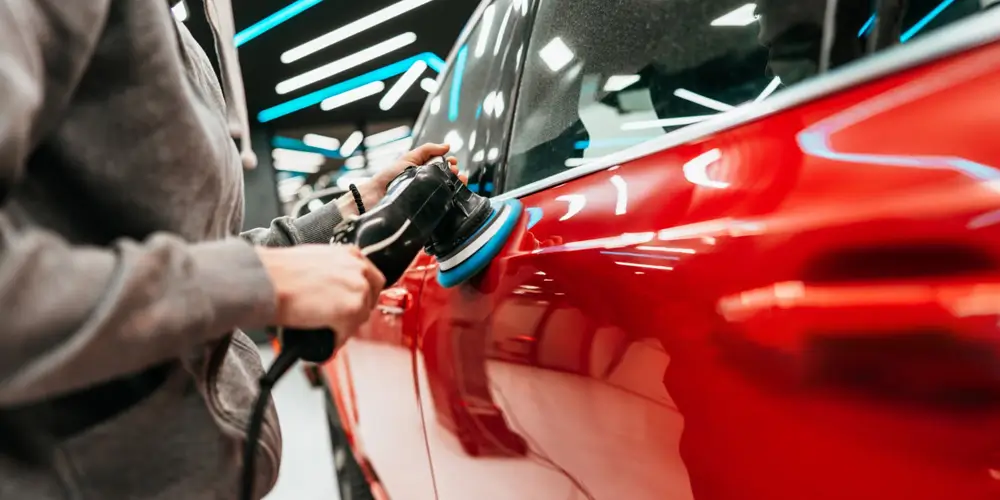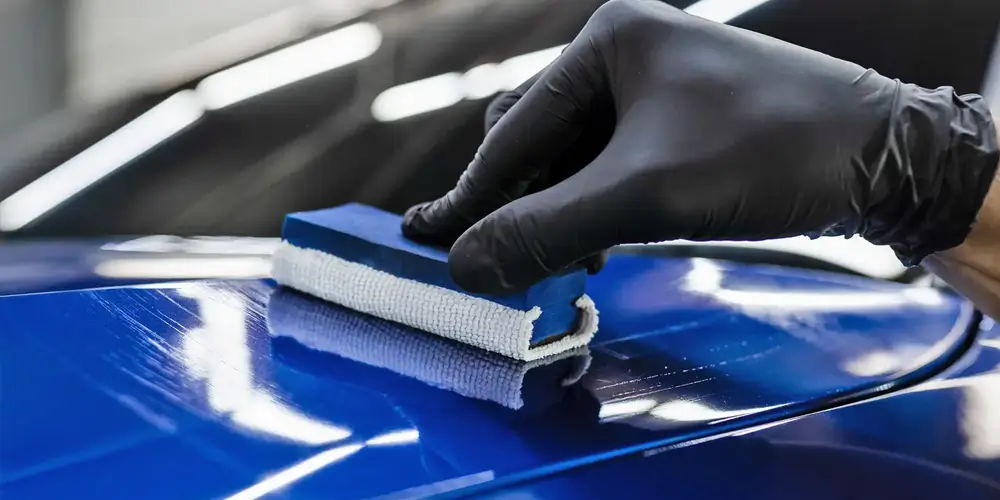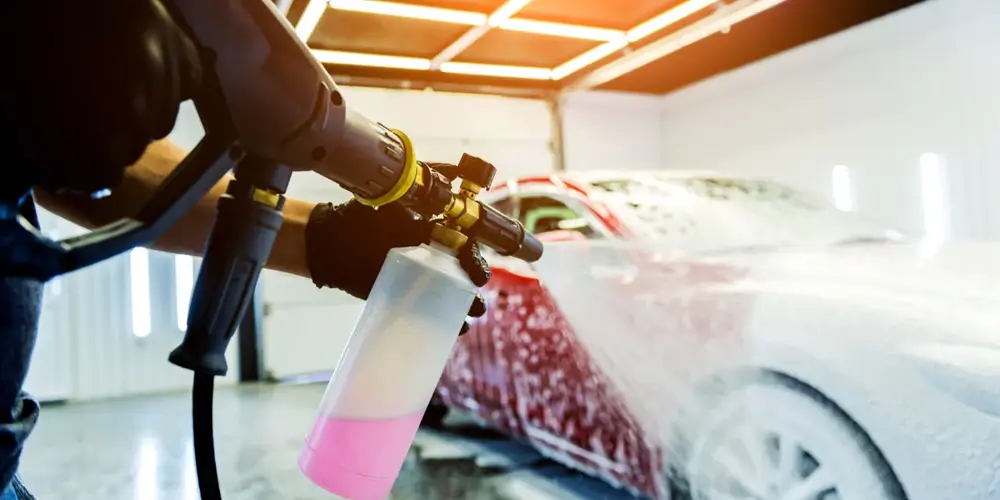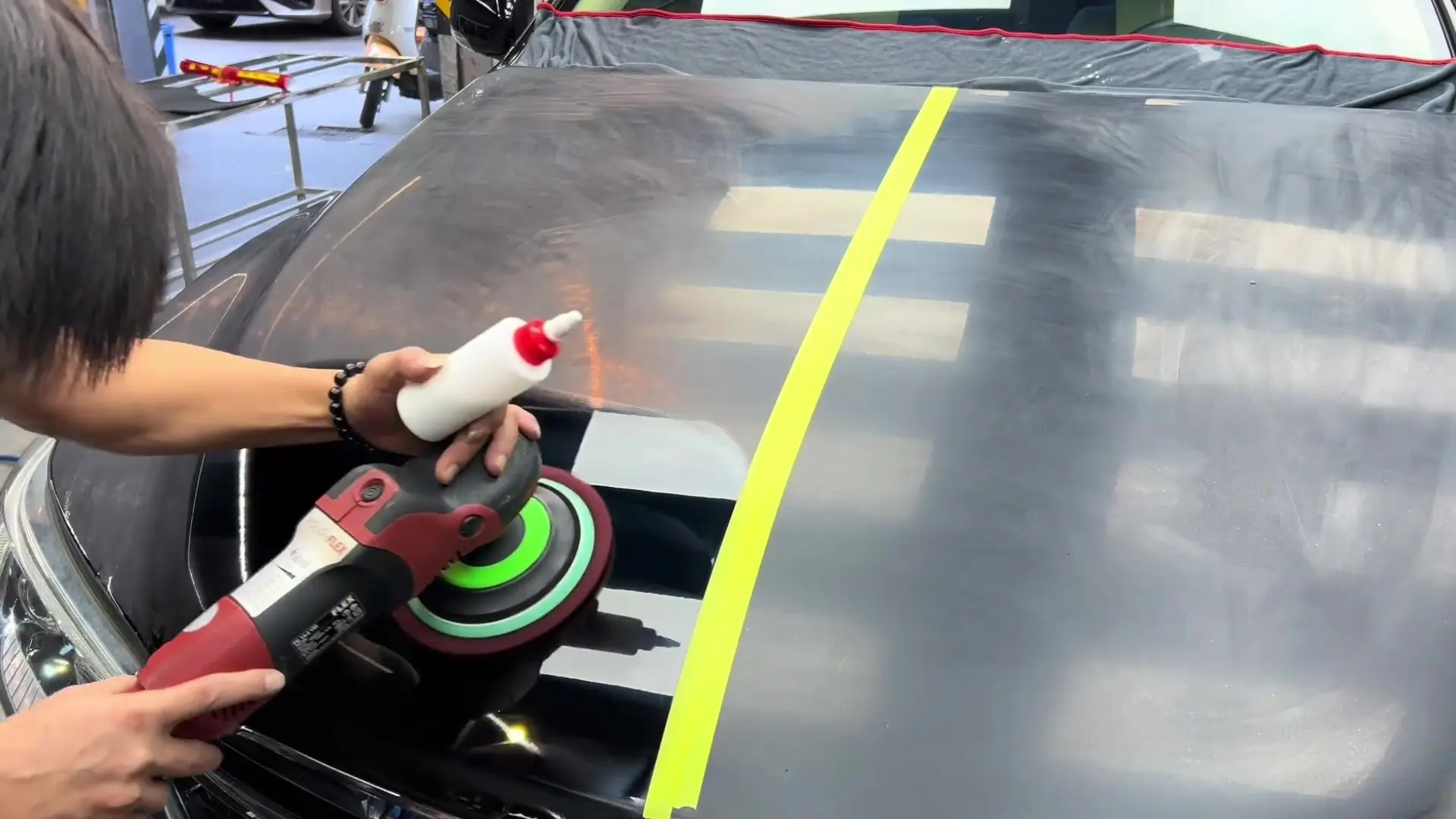How to Use Rubbing Compound with a Buffer
Rubbing compounds are essential tools in automotive detailing and maintenance, designed to help restore the shine and smoothness of a vehicle's paintwork. When used in combination with a buffer, they can effectively remove scratches, oxidation, and other imperfections from your car's surface. At SYBON, we specialize in producing high-quality rubbing compounds and polishing solutions for professional use. Whether you are an importer, wholesaler, car detailing shop owner, or automotive repair center manager, this guide will help you understand how to use a rubbing compound with a buffer to achieve the best results for your clients.
If you are interested in partnering with SYBON and accessing our premium range of automotive cleaning and maintenance products, please visit our website and fill out the contact form. We are eager to work with you to bring top-tier automotive care solutions to your business.
What Is a Rubbing Compound?
Rubbing compounds, often referred to as cutting compounds or cutting polish, are abrasive materials designed to remove the top layer of paint or clear coat. The primary purpose of these compounds is to eliminate imperfections such as:
1. Scratches and swirl marks
2. Oxidation and sun damage
3. Water spots and acid rain damage
4. Fine sanding marks
Rubbing compounds work by wearing down the surface imperfections, leaving a smoother and more even finish. After using a rubbing compound, the vehicle's paintwork will often require further polishing to restore its gloss, followed by a waxing or sealing step to protect the newly polished surface.
Why Use a Buffer with a Rubbing Compound?
A buffer, also known as a polishing machine or polisher, is a tool used to apply rubbing compound more evenly and efficiently than by hand. Buffers come in two main types:
1. Rotary Buffers: These machines spin in a single circular motion, making them more aggressive and ideal for cutting through heavy oxidation and deeper scratches. Rotary buffers require more skill to use, as they can generate heat and potentially damage the paint if not handled properly.
2. Dual Action (DA) Polishers: These machines oscillate while spinning, making them less aggressive and more beginner-friendly. DA polishers are ideal for light to moderate paint correction and are less likely to cause damage, making them a safer option for most users.
Using a buffer with a rubbing compound has several advantages:
1. Even Application: A buffer ensures that the rubbing compound is applied evenly across the surface, preventing uneven cuts or polishing.
2. Faster Results: Buffers work more quickly and efficiently than hand application, making the process faster, especially for large areas.
3. Better Finish: A buffer can produce a smoother and more refined finish than hand application, particularly when working on large or complex surfaces.
Step-by-Step Guide: How to Use Rubbing Compound with a Buffer
Step 1: Gather Your Materials
Before you begin, make sure you have all the necessary materials. Here's what you'll need:
1. Rubbing compound (SYBON offers high-quality options for various needs)
2. Buffer (rotary or DA polisher)
3. Appropriate polishing pad (wool or foam, depending on the level of cut needed)
4. Microfiber towels
5. Masking tape (optional, for protecting edges and trim)
6. Clean water and soap for washing the vehicle
7. Safety gear (gloves, eye protection)
Step 2: Prepare the Vehicle
1. Wash the Car: Before applying any rubbing compound, thoroughly wash the vehicle to remove dirt, dust, and other contaminants. Using a clay bar after washing can help ensure that the surface is completely clean and smooth, free of any embedded particles that could cause scratches during the buffing process.
2. Mask Off Sensitive Areas: If you're working around areas with plastic trim, rubber seals, or other delicate components, use masking tape to protect these parts from the rubbing compound and buffer. These materials can stain or be damaged if they come into contact with the compound.
Step 3: Choose the Right Polishing Pad
The type of pad you use with the buffer can significantly affect the outcome. There are different pads for different levels of cutting and polishing:
1. Wool Pads: These are more aggressive and provide a faster cut, making them ideal for heavy oxidation, deep scratches, and severe paint damage.
2. Foam Pads: Foam pads come in various levels of aggressiveness. A heavy-cut foam pad is suitable for more moderate paint defects, while a light-cut or finishing foam pad is better for final polishing and refining the surface after using a more aggressive compound.
Make sure the pad is clean before use, as dirt or debris can cause additional scratches.
Step 4: Apply the Rubbing Compound
1. Apply the Compound to the Pad or Surface: Depending on the size of the area you're working on, you can either apply the rubbing compound directly to the polishing pad or dot it onto the surface of the vehicle. Start with a small amount of compound; you can always add more if needed.
2. Distribute the Compound: Before turning on the buffer, spread the compound evenly across the surface using the pad. This ensures that the compound is not splattered around when you start the machine.
Step 5: Start Buffing
1. Begin with a Low Speed: Start the buffer at a low speed to avoid slinging the compound and to distribute it evenly. This will also help you get a feel for how the compound is interacting with the paint.
2. Work in Small Sections: Buff one small section of the car at a time (approximately 2x2 feet). This ensures that the rubbing compound doesn't dry out before you've had a chance to work it into the surface.
3. Apply Light to Moderate Pressure: Let the buffer do the work. Apply light to moderate pressure, depending on the level of cut you need. Avoid pressing too hard, as this can generate heat and potentially damage the paint.
4. Move the Buffer Slowly: Work the buffer in overlapping passes, moving slowly and steadily across the surface. Keep the buffer moving at all times to avoid burning the paint or creating uneven results.
5. Check Your Progress: After a few passes, stop the buffer and wipe the area with a clean microfiber towel to check your progress. If necessary, apply more rubbing compound and continue buffing until the imperfections are removed.
Step 6: Refine the Finish
Once you've removed the scratches and imperfections with the rubbing compound, you may notice that the surface is a bit hazy. This is normal and can be corrected by following up with a finer polishing compound or finishing polish.
1. Switch to a Polishing Pad: Swap out the cutting pad for a lighter polishing pad (foam is ideal) to refine the finish and restore the gloss to the paint.
2. Apply Polish: Use a small amount of finishing polish and repeat the buffing process, working in small sections and using light pressure.
Step 7: Protect the Finish
After polishing the vehicle to a smooth, glossy finish, it's essential to protect the paint with a layer of wax or sealant. This will help protect the newly restored surface from future damage, such as UV rays, contaminants, and oxidation.
1. Apply Wax or Sealant: Use a high-quality wax or sealant to protect the finish. Apply it with a clean foam or microfiber applicator and allow it to cure according to the manufacturer's instructions.
2. Buff to a Shine: Once the wax or sealant has cured, use a clean microfiber towel to buff the surface to a high gloss.
Common Mistakes to Avoid
1. Using Too Much Compound: More is not always better. Using too much rubbing compound can cause the buffer to become bogged down and can lead to excessive product buildup on the surface.
2. Working on a Hot Surface: Always work on a cool, shaded surface. Buffing on a hot surface can cause the compound to dry out too quickly and may lead to paint damage.
3. Not Keeping the Buffer Moving: Keeping the buffer in one spot for too long can burn through the paint or clear coat, causing irreversible damage.
4. Skipping Steps: Rubbing compound is designed to cut through imperfections, but it often leaves behind a slightly hazy finish. Be sure to follow up with polishing and waxing to achieve the best results.
Conclusion: SYBON - Your Partner for Automotive Care Solutions
Using a rubbing compound with a buffer can dramatically improve the appearance of your vehicle's paint, but it requires the right tools, technique, and patience. At SYBON, we offer a wide range of professional-grade rubbing compounds and automotive care products to help you achieve the best results for your clients. Whether you're an importer, automotive detailing shop owner, or auto repair center manager, SYBON is here to support your business with top-quality solutions.
For more information on our products or to discuss potential collaboration, please visit our website and fill out the contact form. We look forward to working with you to enhance your automotive care services.
By following this comprehensive guide, you can ensure that your vehicles are restored to their original shine and beauty, providing your customers with the best possible results.
Source of this article:https://www.sybonbest.com
Get to know us through more channels:




